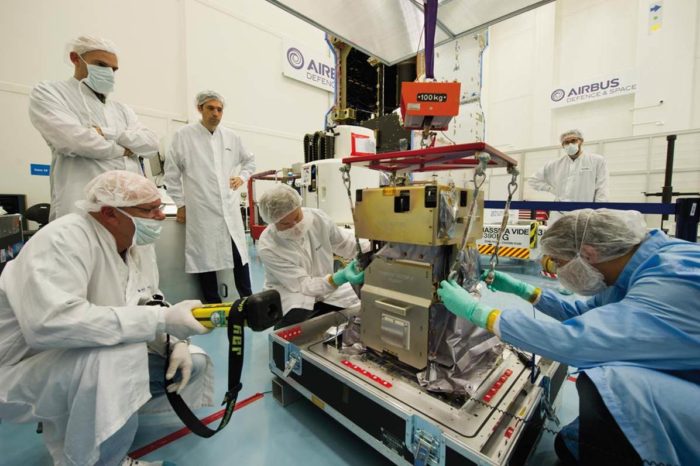In April of 2015, NASA announced that it had chosen SES to host its Global-scale Observations of the Limb and Disk (GOLD) payload aboard their SES-14 spacecraft. The GOLD payload is an ultraviolet (UV) imaging spectrograph designed to measure densities and temperatures in Earth’s thermosphere and ionosphere.
Now, two years later, GOLD is rapidly approaching completion and launch. In just the past few weeks, it was announced that the GOLD payload was successfully installed on SES-14, taking yet another giant step towards launch and operation.
But GOLD is noteworthy for many reasons besides its mission to measure densities and temperatures in the thermosphere and ionosphere. It’s notable for how it’s going to get there – as a hosted payload aboard a commercial geostationary (GEO) satellite – a method for getting payloads into orbit that is not widely adopted and utilized across the federal government.
It’s also notable for who is helping to make the entire program a success. GOLD is being developed and operated by an interesting mix of organizations – including NASA, the University of Colorado’s Laboratory for Atmospheric and Space Physics (LASP), the University of Central Florida, Airbus Defence and Space, and SES. In fact, GOLD represents the first time universities and a commercial spacecraft operator will team up to enable a NASA science mission.
To learn more about the GOLD program, this unique partnership and why GOLD is so exciting to the space industry, we sat down with the people working to make GOLD a reality across some of the disparate organizations that are part of the program, including:
- Todd Gossett: the Senior Director of Hosted Payloads at SES Space and Defense
- Richard Eastes: the GOLD principal investigator at the University of Central Florida
- Rory Barrett: the GOLD Project Manager at LASP
- William McClintock: the GOLD deputy principal investigator at LASP
During our discussion, we talked about how GOLD will assist NASA and the scientific community in research and observations, we identified the different roles and responsibilities that each of the organizations are playing the GOLD program, and discussed why the program is both historic, and a learning experience for government and the space industry.
Here is what the GOLD team had to say:
[iframe //percolate.blogtalkradio.com/offsiteplayer?hostId=858045&episodeId=10053895]
Image courtesy of Airbus Defence and Space.
